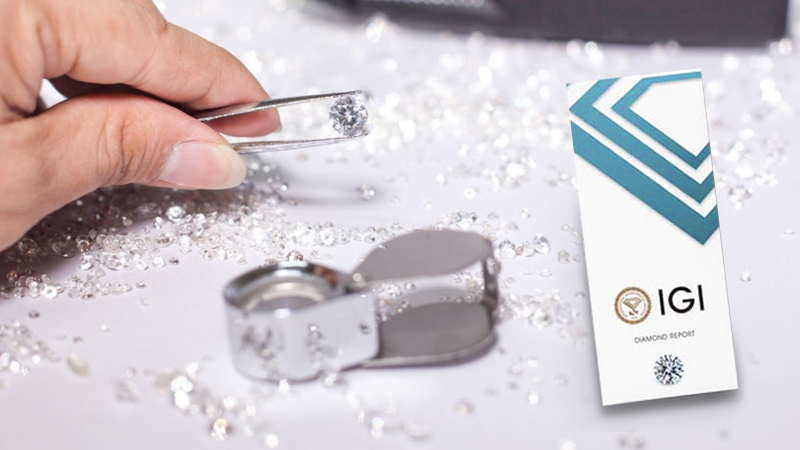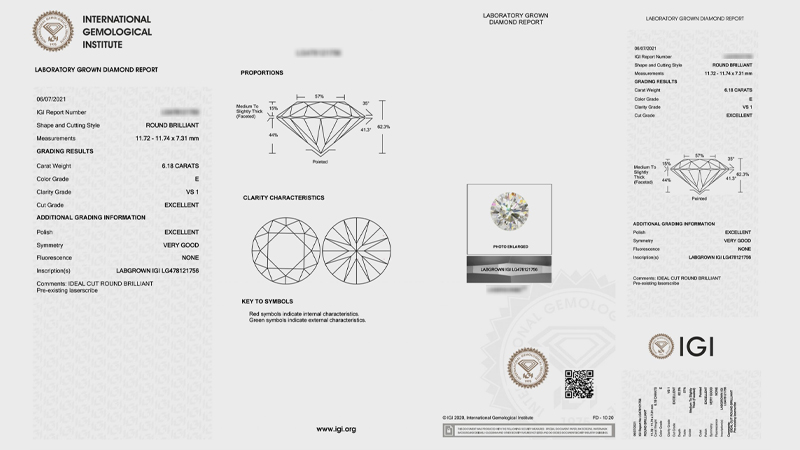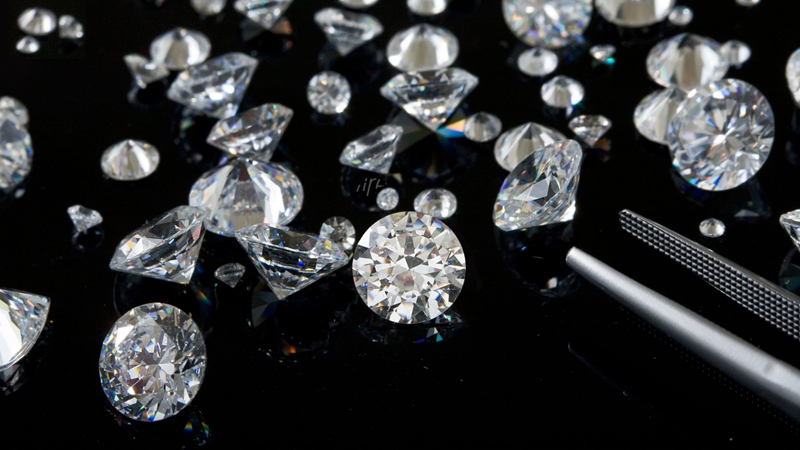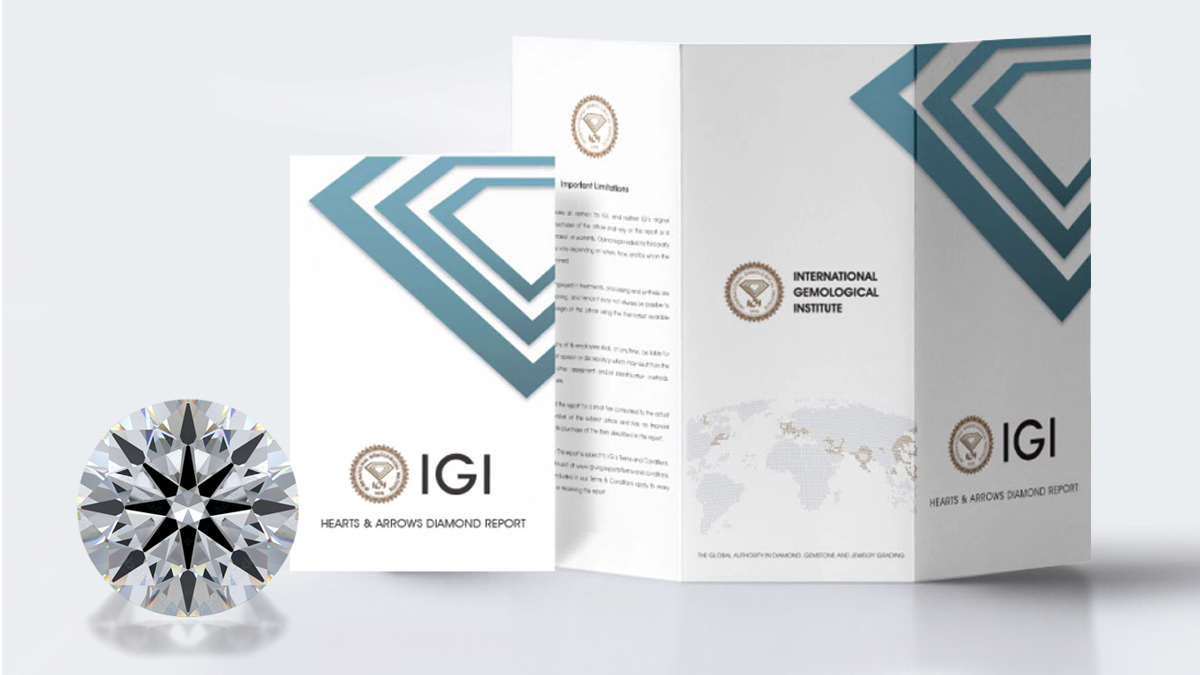The International Gemological Institute (IGI) is an grading lab organization that provides services to the jewelry industry. These services include laboratory testing, identification, and evaluation of diamonds and other gemstones. IGI, which was established in 1975, seeks to offer precise, trustworthy, and unbiased gemstone appraisals.
The IGI is currently the most reputable name in diamond certification, having certified over 1 million diamonds annually. Additionally, it offers degree plan and education courses for the gem and jewelry industry.
In terms of determining the quality of lab grown diamonds, IGI is holding a prominent position. Additionally, they set themselves apart by providing evaluation and appraisal of finished jewelry goods.
The International Gemological Institute (IGI) is a major international organization. It has 20 laboratories located around the world.
Additionally, it has 14 gemology schools. These schools graduate thousands of new jewelry experts every year. To establish authenticity, a reputable independent laboratory meticulously examines colored stones, jewelry, and lab grown diamonds.
The experts then create an IGI lab grown diamond report to summarize the findings. Vendors can present an IGI certificate with the IGI diamond. This allows potential customers to verify that the diamond is genuine.
IGI is less well-known than the Gemological Institute of America in the American market. This is because IGI only has two locations in the US.
Why Is Diamond Certification Important?

Getting a diamond certificate is crucial while diamond purchasing. Your diamond certificate guarantees that your jewelry, engagement ring or solitaire meets the highest standards of grading. These standards are set by the GIA, IGI, and GCAL. These three are the greatest gemological laboratories in the world.
Your diamond quality are certified by IGI, GCAL, or GIA. They come with a certificate that guarantees their quality, price, and value. This certificate protects your investment and gives you peace of mind. In addition to verifying the diamond's origins, the certification covers the 4Cs, or cut, color clarity and carat.
To tell lab-created diamonds apart from natural diamonds, look at the certificate. It will indicate which type of diamond it is.
The girdle of certified lab-grown and mined diamonds frequently includes a tiny laser inscription. You can be certain that your diamond is as stated on its certificate. The number on your diamond will match the number on the certificate, as seen in the image.
When a diamond is lab-grown, its laser number will begin with the letters "LG," designating it as such. Using a 30x jeweler's loupe, a jeweler will be able to recognize a lab-grown diamond in this manner.
IGI Grading Reports

The IGI certified lab grown diamond contains important facts about the diamond. Here's a brief overview of what you can anticipate knowing about IGI certified lab-grown diamonds:
Description
Briefly explains the type of diamond it is, along with its composition and place of origin. All of with clarity's lab created diamonds in this instance have IGI certification.
Shape and Cut
A diamond's cut and shape, including its faceting style. Is the diamond fancy shaped or round? How symmetrical are the diamond's proportions (including depth, table, crown height, pavilion depth, girdle, and culet) and faceting style (cutting accuracy)?
Measurements:

Carat Weight
The term "carat" (ct) refers to a diamond's exact weight. The price of a stone is significantly influenced by the carat weight (ct). As a result, the price does not change as the carat weight does.
Lab-grown diamonds offer an advantage over genuine diamonds. They are available in higher carat weights for a lower price.
Color Grade
The color grade of a diamond is determined by whether color is present or not. A scale from D to Z is used to grade the color on an alphabetical basis. "D" indicates that the diamond is colorless, whereas "Z" indicates that it has a yellowish tint.
Lab created diamonds still have color grades and differences. This is because the environment in which they are produced affects them differently. The seed quality and other substances added while it is being produced can have an impact on man-made diamonds.
Clarity Grade
The size, number, and position of internal lab diamond features are measured by clarity. The visibility of any flaws is also taken into consideration.
An experienced gemologist examines a diamond under x10 magnification to examine the clarity in greater detail. The scale ranges from "I" (included) to "FL" (flawless).
"I" denotes obvious imperfections. "FL" shows no problems that can be noticed, even under magnification. Both natural and lab grown diamonds exhibit inclusions in a similar manner.
Cut Grade
The cut grade of a diamond is determined by considering three factors: polish, symmetry, and proportions. Polish refers to the smoothness of the diamond.
Symmetry is the cutting precision. Proportions include the crown height, table, and other elements. Cut is graded on a scale from "poor" to "excellent."
How nicely diamonds are cut from the diamond rough created in the lab depends on cutting. What matters most in this situation is how beautifully the diamond is cut to achieve that brilliant sparkle.
Proportions:

Table
The size of a diamond's table, or biggest facets. In IGI certification, the size is represented as a percentage by averaging the minimum and maximum diameter.
Crown Height
The crown's height is measured and displayed as a percentage by IGI certification. This percentage is the area above the lab diamond's girdle. While the degree number indicates the crown angle, which measures the facets and girdle plane of the bezel.
Pavillion Depth
Measures the girdle diameter to calculate the pavilion depth's average percent. The area of the diamond below the girdle is called the pavilion. The distance between the girdle and the pavilion's primary facet is measured as the pavilion angle degree that follows.
Girdle
The girdle is described as being either "extremely thin" or "extremely thick." The area of the lab diamond that divides the pavilion from the crown is known as the girdle thickness.
Culet
The culet, or the bottom (often pointed) of a full-cut diamond, is described. It may range from "none" to "extremely large." When setting, a culet of "none" is good and needs to be handled gently. While "extremely large" takes away from a diamond's appearance.
Finish
Excellent and Very Good are the top ratings for a diamond's polishing finish. Poor is the lowest.
The International Gemological Institute (IGI) classifies the finish into five categories: Excellent, Very Good, Good, Fair, and Poor. This finish is used to evaluate the quality of the diamond. The top two grades are Excellent and Very Good, while the lowest is Poor.
The IGI considers several aspects when determining a diamond's Finish. These include the overall symmetry of the facets, the level of polishing, and the presence of any surface flaws. The IGI additionally considers the magnitude and placement of any surface flaws when assigning the Finish grade.
Excellent: When viewed with a 10x magnification, no flaws are noticeable.
Very Good: When viewed with a 10x magnification, very few flaws are visible.
Good: When viewed with a 10x magnification, some flaws are visible.
Fair: Under 10x magnification, there are many flaws that are obvious.
Poor: Severe flaws that can be seen with the naked eye.
Conclusion

Lab Grown Diamonds are real diamonds, which are also certified by official gemological institutes like IGI or GIA. A common mistake is to confuse lab diamonds with diamond simulants, such as moissanite and cubic zirconia. However, these simulants have different chemical compositions than lab diamonds.
Lab created diamonds are formed of the same substance as mined diamonds, which is carbon that has been crystallized. Additionally, the atoms are cubic, or grouped in the same way.
The benefits of lab-grown diamonds are clear: they are considerably less expensive, environmentally friendly, ethical, and socially responsible. Diamond costs have decreased significantly. This has enabled many customers to purchase diamonds of high quality and more carats for the same price.
In addition to sustainability and ethics, Lab Diamonds' excellent quality is frequently highlighted. One of the oldest and most reputable diamond certification labs in the world is IGI. Millions of diamonds have been certified by it throughout its more than 50 years in operation.
The diamond industry mostly accepts the accurate, trustworthy, and impartial diamond grading reports provided by IGI. Their diamond graders are skilled experts with years of expertise who assess gems using cutting-edge tools. To guarantee the consistency and quality of its diamond grading reports, IGI follows a strict set of rules and guidelines.
To get in-depth details regarding a diamond's clarity, consult the IGI diamond certification. Always ask about the authenticity of an IGI certificates when purchasing a diamond.

